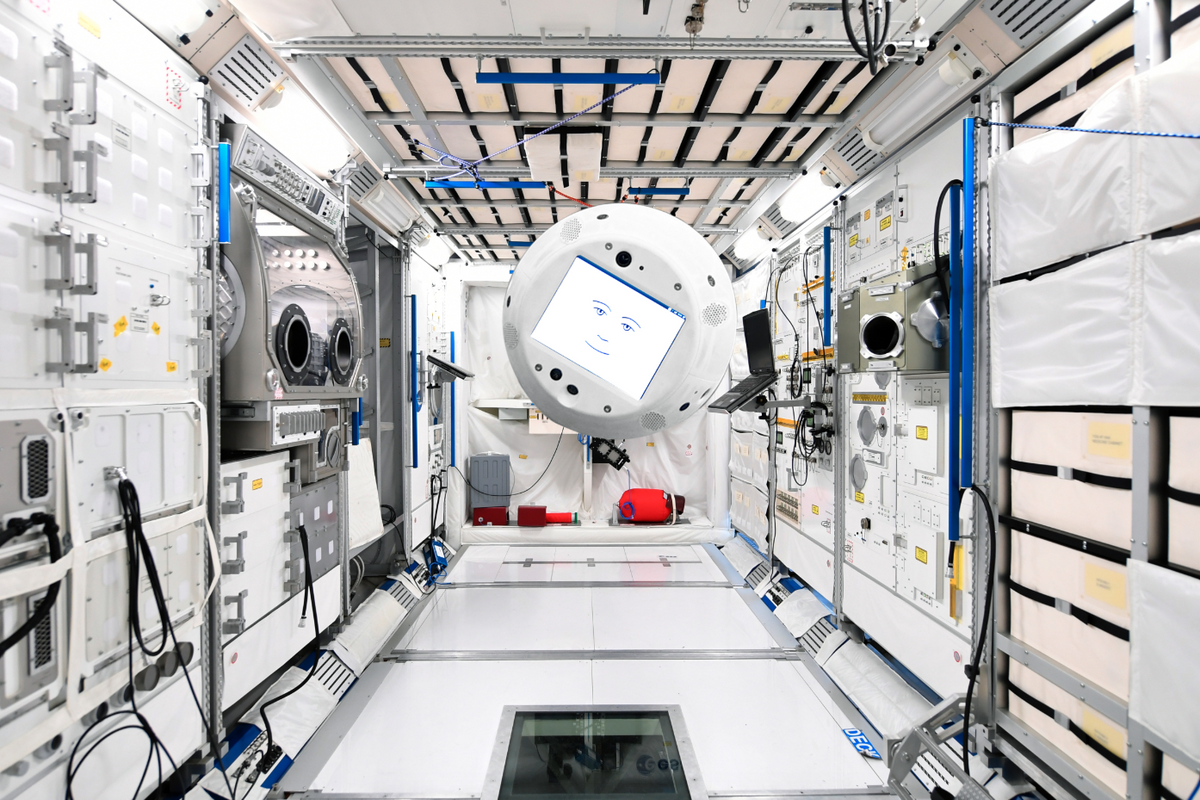Industry

DLR
Say hello to CIMON, a flying AI robot built to help out on the space station
If Alexa had heroes, they would look a lot like CIMON

If Alexa had heroes, they would look a lot like CIMON
Alexa, Siri and Google Assistant are all well and good, but they can't go to space and help out on the ISS can they? That's where CIMON, a flying AI robot, has the upper hand.
Blasting off into space today (June 29) aboard a SpaceX resupply mission to the International Space Station, CIMON (can't we just call him Simon?) is a sphere with a computer screen for displaying emotions.
Read More:
CIMON can fly through the space station by sucking in then pushing out air using 14 internal fans, and comes when his name is called.
The robot uses IBM's Watson artificial intelligence to speak and interact with its fellow crew members, coming to them when they call, nodding to questions, and providing instructions to help with complex tasks during the mission.
Approximately a foot in diameter, CIMON displays a drawing of a human face on his computer screen, which changes to help express his spoken instructions. The robot was developed by airplane manufacturer Airbus for Germany's national space agency, and is the first stage of an experiment to see if AI robots can be useful for humans in space.

Matthias Biniok, IBM's lead Watson architect in Germany, said: "The aim of the CIMON project is to examine the current capabilities of artificial intelligence in a complex environment such as the International Space Station, in order to provide the best possible support to people in such conditions."
The robot's cameras and microphones have been specially configured to work with German astronaut Alexander Gerst, although the Watson artificial intelligence means CIMON can also interact to some extent with others when they call his name.
CIMON will perform three experiments with Gerst to prove his usefulness. These include experiments with crystals and a Rubik's cube, and a medical experiment where the robot will be used as a flying camera.
The German Aerospace Center (DLR) said: "CIMON allows the astronaut to keep both hands free, with no need to manually operate a computer...Thanks to this fully voice-controlled access to documents and media, the astronaut can conveniently navigate through operating and repair instructions and procedures for experiments and equipment."
CIMON will be sent to the ISS aboard a used SpaceX Falcon 9 rocket, along with a used Dragon cargo capsule, demonstrating SpaceX's ability to reuse its space vehicles. However, this rocket will not be landed and used again, as SpaceX is phasing out its older design in favor of newer models of Falcon 9.
The mission is scheduled to take off from Cape Canaveral Air Force Station in Florida at 5:42am ET on Friday, June 29.
GearBrain Compatibility Find Engine
A pioneering recommendation platform where you can research,
discover, buy, and learn how to connect and optimize smart devices.
Join our community! Ask and answer questions about smart devices and save yours in My Gear.
